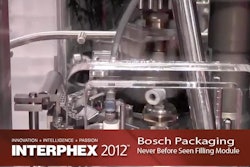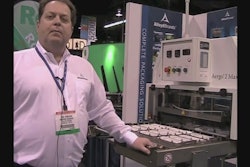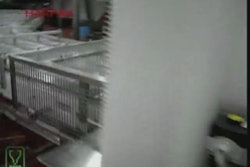1. Know your closure. The tip we heard the most, from both suppliers and end users, was that you must understand the tolerance of the closure itself and then marry the material tolerance to the machine tolerance. You must completely understand all the geometry, tolerances, and measurements of your closures before you order a machine. For example: What sort of pressure does a snap-on closure take? With a screw-top closure, you might be able to use 20 times more force, but how many times do you have to rotate it? Often, packagers don’t take into account the type of closure and balance the application torque and removal torque required by the consumer. Induction sealers add another variable, as they may loosen caps, requiring the addition of a retorquer. Additionally, every closure has a decay time on the removal torque; you need to know the decay time, because it may loosen on the shelf. Know this information and share it with your supplier.
2. Consider both the consumer and the machine. Because the cap has to interface with both. Consider the size of the bottle opening from both a filling and evacuation standpoint. Also evaluate whether to use a single-closure assembly versus a two- or three-piece cap assembly. The geometry of the package must be considered first, and then you should explore the type of feeding system you need to deliver the closures to the capping machine.
3. How will the closure design interface with the machine function? Before you consider centrifugal sorting bowls, you must know the height and diameter of the part versus the length of the part, as well as the weight bias, to determine if it will sort well, or at all. Other considerations include: Do the sidewalls have paper or not? This makes it more unstable in handling. You must look at this in a very granular fashion; you must know what the natural tendency of a part is before you toss it into a sorting bowl. It’s critical to know how the cap design will interface with the machine function. And you have to know that before you apply any sort of force to it. You have to find a way to differentiate shapes in the sorting bowl. Once you know the natural tendencies of a part, you can assist those tendencies through the design of your machinery, and you will achieve more reliable operation when capping and handling. One philosophy is to permit machine function to drive closure design—in other words, make sure that the design of the cap is compatible with what’s typically available in the way of unscrambling and orientation equipment.
4. Consider future closure flexibility. Like any other packaging machine, try to anticipate future needs. Capping machines may need to be able to deal with a variety of different types of closures over time. Over the years, cap designs and applications have become increasingly complex: For example, spray-through caps must be oriented with the graphics on the container.


























